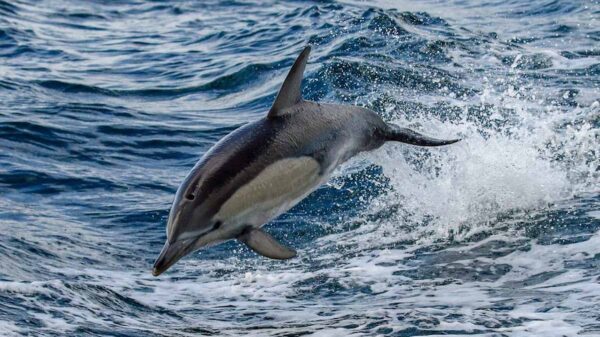Recent research has developed a predictive model that significantly enhances the accuracy of Arctic sea-ice extent forecasts. The study reveals that the transition from multi-year thick ice to predominantly first-year thin ice is largely driven by the impacts of global warming. This shift is not only altering the landscape of the Arctic but also complicating the challenges associated with predicting sea-ice behavior.
The Arctic region is experiencing a profound transformation as climate change progresses. Traditionally dominated by multi-year ice, which is thicker and more stable, the area is increasingly characterized by first-year ice. This younger ice is notably thinner and more susceptible to melting, contributing to a less stable ice cover. As a result, the dynamics of sea-ice formation and melt are changing, complicating existing models that rely on historical data.
Stepwise regression, a statistical method that identifies the most significant predictors among a set of variables, was employed in this research. The model demonstrated a high degree of accuracy in forecasting sea-ice extent, reflecting the urgency of developing reliable tools to understand and predict changes in the Arctic. The implications of this research are critical, particularly as the Arctic serves as a bellwether for global climate trends.
Impacts of First-Year Ice on Arctic Ecosystems
The predominance of first-year ice presents numerous challenges for Arctic ecosystems. This thinner ice cover affects not only marine life but also indigenous communities that rely on stable ice conditions for hunting and transportation. The fragility of first-year ice raises concerns about the availability of traditional resources, which are essential for the livelihoods of these communities.
Furthermore, the change in ice characteristics impacts climate regulation processes. The Arctic plays a crucial role in reflecting sunlight back into space, and a decrease in ice cover can lead to increased heat absorption by the ocean, further accelerating global warming. This feedback loop underscores the importance of accurate predictions for Arctic sea-ice extent, which can influence climate models worldwide.
The research findings emphasize the need for continued investment in climate science and monitoring technologies. By improving predictive capabilities, scientists can better inform policymakers and stakeholders about the potential consequences of climate change in the Arctic and beyond.
Future Directions and the Importance of Accurate Predictions
As the Arctic continues to transition into what is now referred to as the “New Arctic,” there is a growing urgency to adapt to these changes. Accurate models for predicting sea-ice extent are essential for various sectors, including shipping, fishing, and environmental conservation.
With more precise forecasts, industries can better prepare for the changing conditions, while governments can implement strategies to mitigate the impacts of climate change. The research highlights a critical intersection between science and policy, where informed decisions can lead to more effective solutions for the challenges posed by a warming planet.
In conclusion, the development of this new predictive model marks a significant advancement in understanding Arctic sea-ice dynamics. As global warming reshapes the Arctic landscape, researchers are tasked with the responsibility of providing accurate, actionable data to navigate the complexities of climate change. The ongoing evolution of the Arctic will require collaborative efforts across disciplines to ensure a sustainable future for both the environment and the communities that depend on it.



































































